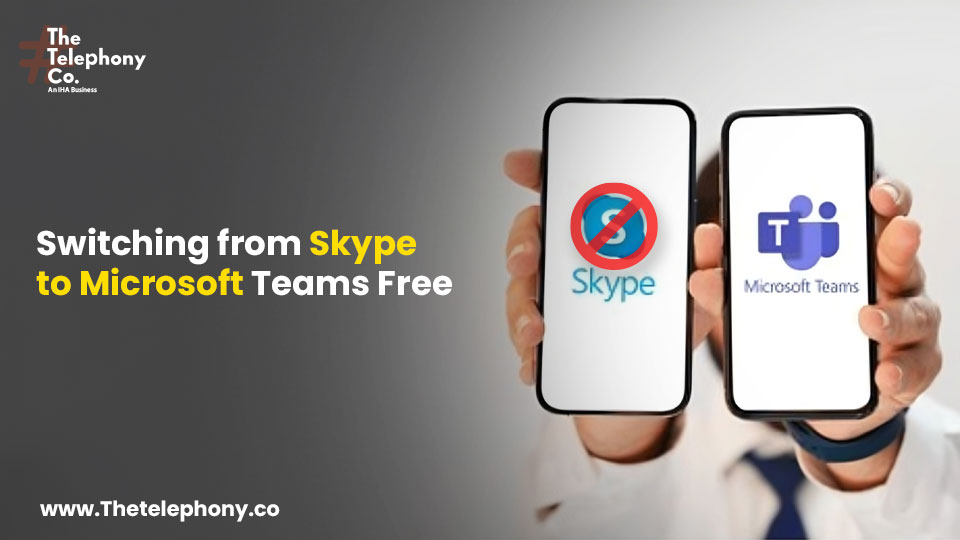As technology continues to evolve, so do the tools that help us connect and collaborate. One major change that many users have had to navigate is the transition from Skype to Microsoft Teams, particularly with the announcement that Skype would be phased out by Microsoft in May 2025. For many individuals and businesses, Skype was a go-to communication platform for years. But with the rise of more integrated and feature-rich tools like Microsoft Teams, the shift was inevitable.
In this article, we’ll explore the benefits of moving from Skype to Microsoft Teams Free, how to make the switch, and why Teams might be the better choice for your communication needs.
Why Microsoft is Shifting from Skype to Microsoft Teams
Microsoft Teams was introduced as a collaboration platform designed to bring together chat, meetings, file sharing, and app integration all in one place. While Skype was a great tool for one-on-one chats and video calls, Microsoft Teams was built to support larger teams, more complex communication needs, and more robust collaboration features.
The decision to phase out Skype and fully integrate Microsoft Teams into its ecosystem is part of Microsoft’s strategy to simplify and consolidate their offerings. Microsoft Teams provides a broader range of features that Skype could not offer, particularly for businesses, schools, and organizations looking for a comprehensive communication solution. With Teams, users can do everything they did with Skype—and more.
What is Microsoft Teams Free?
Microsoft Teams Free is a no-cost version of Microsoft Teams that allows individuals and small teams to collaborate seamlessly. It’s perfect for those who don’t need all the enterprise-level features offered in the paid versions of Teams but still want the benefits of the platform.
Here’s what Teams Free includes:
- Unlimited chat messages and search: You can message your team members at any time, and all conversations are searchable for easy reference.
- Video calls and meetings: Teams Free supports international calls, voice calls, Video and group meetings with up to 100 participants.
- File sharing and collaboration: You can share files, collaborate in real time with Office apps (Word, Excel, PowerPoint), and store up to 5GB of files in the cloud.
- Integration with Microsoft 365 apps: Teams Free integrates with the web versions of Microsoft Office apps, so you can work on documents directly within the platform.
This makes Teams Free an excellent alternative for individuals and small teams who need a tool that supports communication, collaboration, and project management without the cost.
Also Read: Free Skype Alternatives
Benefits of Switching to Microsoft Teams Free
Better Integration with Microsoft Ecosystem
One of the standout advantages of Microsoft Teams is its deep integration with other Microsoft products. If you’re already using Microsoft 365 (formerly Office 365), Teams seamlessly integrates with Word, Excel, PowerPoint, Outlook, and other productivity tools. This means you can open, edit, and collaborate on documents directly from Teams, making it a one-stop shop for communication and collaboration.
Improved Collaboration Features
Unlike Skype, Microsoft Teams allows for more effective collaboration among teams. Features like threaded conversations, channel-based communication, and file sharing make it easier to keep track of important discussions. Teams also supports apps and bots, so you can customize your workspace with tools that are relevant to your needs.
Larger Group Meetings
While Skype limits video call participants, Microsoft Teams Free allows you to host video calls and meetings with up to 100 participants. This makes it an ideal choice for virtual meetings, online classes, or group discussions without having to upgrade to a paid plan.
Better Security and Compliance
Microsoft Teams benefits from the robust security features of the Microsoft ecosystem, including encryption, two-factor authentication, and advanced compliance tools. While Skype also provided secure communication, Teams offers enhanced features, which makes it a safer choice for business and sensitive communications.
Organized Communication
With Teams, you can create different “teams” for various projects or departments, making communication more organized and reducing the chaos of having to scroll through endless chats. Channels within each team allow for focused discussions on specific topics, keeping everything neat and accessible.
How to Move from Skype to Microsoft Teams Free
If you are a Skype user, moving to Microsoft Teams Free is simple:
- Download Microsoft Teams or Visit Website – You can get the free version from the official Microsoft Teams website.
- Sign in with your Microsoft Account – Use the same account you used with Skype.
- Import Contacts – While Teams doesn’t automatically import Skype contacts, you can manually add people by their email or phone number.
- Start Chatting or Calling – Begin using Teams to chat, make video calls, create groups, and more.
Conclusion
Switching from Skype to Microsoft Teams Free is a smart move for anyone looking to improve their communication and collaboration experience. With its rich features, strong integration with Microsoft 365, and support for larger teams, Microsoft Teams is designed to meet the needs of modern users. While the transition might require some adjustment, the long-term benefits make it well worth the effort.
By moving to Teams Free, you’re not only keeping up with the times but also positioning yourself to take advantage of a powerful tool that can help streamline your workflow and improve communication—whether for personal use, small teams, or businesses.

